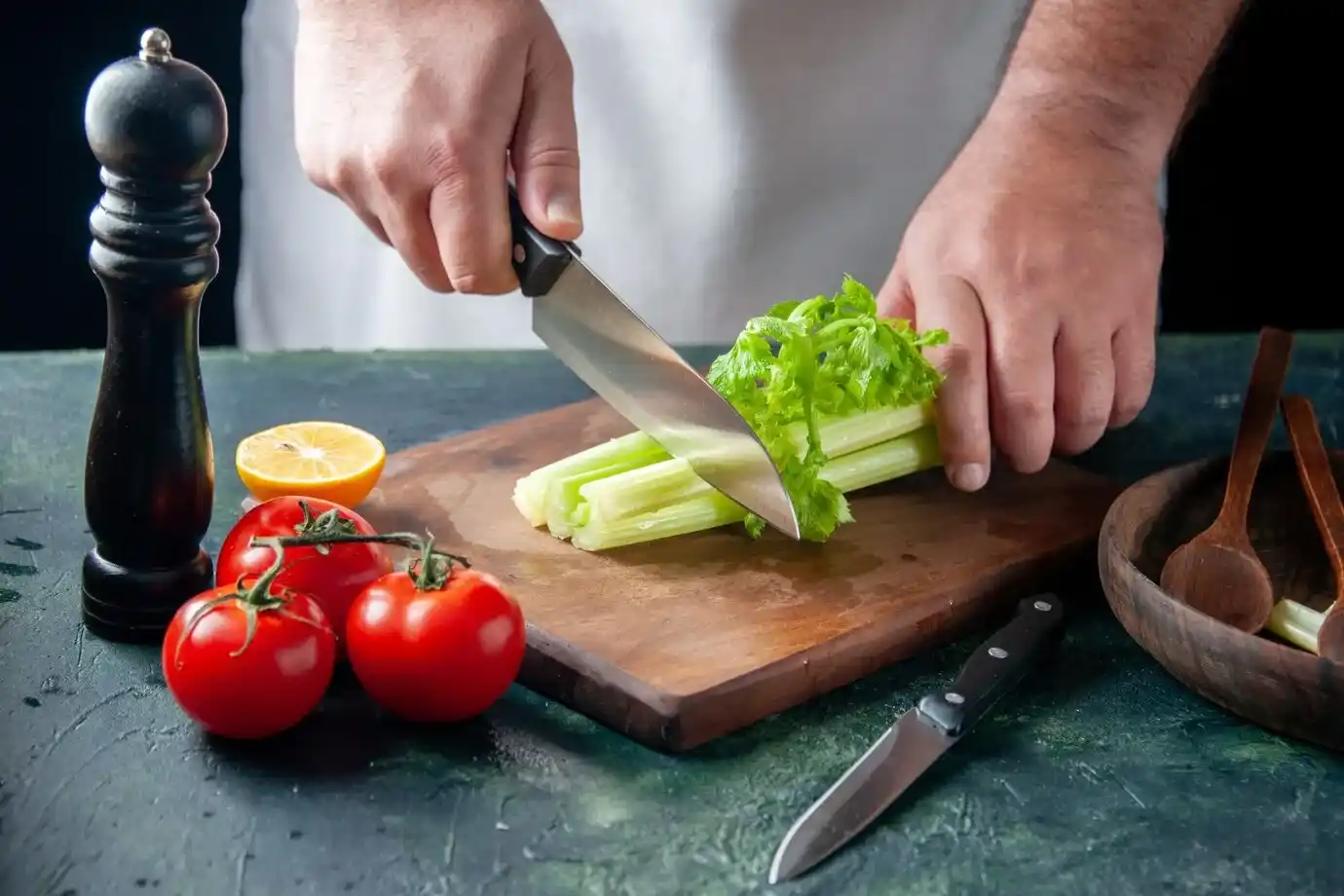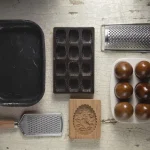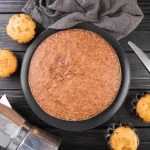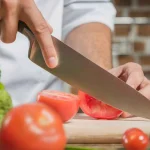Cooking at home can be a delightful experience, but without proper knife skills, it can also be frustrating and even dangerous. Mastering the basics of knife skills is crucial for any home cook who wants to prepare meals efficiently and safely. From chopping onions to dicing tomatoes, having a firm grip on knife techniques will not only make your cooking more enjoyable but also improve the quality of your dishes. In this guide, we’ll explore essential knife skills every home cook should know, with insights from renowned chefs and practical tips that are easy to follow.
The Importance of Knife Skills
Jacques Pépin, a renowned chef, once said, “Mastering knife skills is fundamental to cooking. It’s about precision, safety, and efficiency.” This statement captures the essence of why knife skills are so important. When you know how to handle a knife correctly, you can work faster, produce more consistent cuts, and minimize the risk of injury.
Choosing the Right Knife
Before diving into techniques, it’s important to choose the right knife for the job. Most home cooks will benefit from having a few basic knives:
- Chef’s Knife: This versatile knife is perfect for chopping, slicing, and dicing.
- Paring Knife: Ideal for peeling and intricate work.
- Serrated Knife: Best for cutting bread and soft vegetables like tomatoes.
Julia Child, a culinary icon, emphasized, “A sharp knife is a safe knife. Regular sharpening is essential for preventing accidents and achieving clean cuts.” A dull knife requires more force, increasing the likelihood of slipping and cutting yourself.
Basic Knife Techniques
1. The Grip
How you hold your knife can greatly affect your control and precision. Thomas Keller, a renowned chef and restaurateur, advises, “The grip, the posture, and the movement are all interconnected. Practice and patience are key to developing excellent knife skills.”
- Pinch Grip: Pinch the blade near the handle with your thumb and forefinger, while wrapping your remaining fingers around the handle. This grip offers maximum control.
- Handle Grip: Hold the handle with all fingers, which can be more comfortable for some, but may offer less control than the pinch grip.
2. The Cutting Motion
Different cutting motions are used for various tasks:
- Rocking Motion: Ideal for chopping herbs or mincing garlic. Keep the tip of the knife on the cutting board and rock the handle up and down.
- Slicing Motion: Used for cutting meats and vegetables. Move the knife in a single, smooth motion, pushing forward and pulling back.
3. Common Knife Cuts
Understanding different knife cuts is essential for a variety of culinary tasks. America’s Test Kitchen states, “Understanding different knife cuts, such as chopping, dicing, and mincing, is essential for a variety of culinary tasks.”
- Chopping: Rough, large cuts, typically used for vegetables.
- Dicing: Uniform, small cubes, ideal for ingredients that need even cooking.
- Mincing: Very fine cuts, often used for garlic or herbs.
- Julienne: Thin, matchstick-sized cuts, perfect for stir-fries and garnishes.
Knife Safety
Safety is paramount when handling knives. Gordon Ramsay, a celebrity chef, stresses, “Safety first! Always use a sharp knife and a stable cutting board to prevent accidents.”
- Stable Cutting Board: Ensure your cutting board doesn’t slip. Place a damp towel underneath it for stability.
- Claw Grip: When holding the food, tuck your fingertips inward and hold the item with your knuckles facing the knife. This helps protect your fingers from accidental cuts.
- Keep It Sharp: Regularly sharpen your knives to maintain their edge and reduce the risk of accidents.
Cleaning and Maintenance
Taking care of your knives will prolong their life and performance.
- Hand Wash Only: Avoid putting knives in the dishwasher as the harsh detergent and heat can damage the blade.
- Dry Immediately: Prevent rust and spots by drying your knives immediately after washing.
- Proper Storage: Store knives in a knife block, on a magnetic strip, or with blade guards to protect the edges.
My Knife Skills Journey
I remember the first time I decided to improve my knife skills. I was tired of my unevenly chopped vegetables and constant nicks on my fingers. I took a weekend course at a local cooking school, and it was a game-changer. Learning how to properly hold a knife and practice different cutting techniques made cooking more enjoyable and efficient. Now, prepping ingredients is almost therapeutic, and I look forward to chopping vegetables for a hearty soup or dicing onions for a savory stew.
Advanced Techniques
Once you’ve mastered the basics, you can explore more advanced techniques:
- Deboning a Chicken: This requires a flexible boning knife and precision. It’s a useful skill that can save money and improve the flavor of your dishes.
- Supreme Citrus Fruits: Remove the peel and pith, then segment the fruit into beautiful, pith-free pieces.
- Filet a Fish: A sharp filet knife and a steady hand are essential. This technique ensures you get the most out of your fish with minimal waste.
Practice Makes Perfect
Anthony Bourdain, author and chef, said, “Knife skills are a form of culinary artistry. With practice, you can transform ingredients into beautiful and delicious dishes.” The key to mastering knife skills is practice. Here are a few tips to help you along the way:
- Start Slow: Focus on accuracy before speed. As you become more comfortable, your speed will naturally increase.
- Consistent Practice: Set aside time each week to practice your knife skills. Even 15 minutes can make a big difference.
- Watch and Learn: Online tutorials and cooking shows can provide visual guidance and inspiration.
Resources for Further Learning
While specific studies on knife skills may be limited, there are plenty of resources to help you improve:
- Culinary Schools: Offer comprehensive training in knife skills, including techniques and safety practices.
- Cookbooks and Cooking Magazines: Many include sections on knife skills and techniques. Look for publications like Cook’s Illustrated or Bon Appétit.
- Online Cooking Tutorials: Platforms like YouTube offer a wealth of free knife skills tutorials. Channels like America’s Test Kitchen provide step-by-step instructions.
- Kitchen Supply Stores: Stores like Williams Sonoma or Sur La Table often offer knife skills classes or demonstrations.
Conclusion
Mastering knife skills is a journey that enhances your cooking experience and improves the quality of your dishes. As Jacques Pépin and Julia Child emphasized, precision, safety, and a sharp knife are fundamental to success in the kitchen. By choosing the right knife, practicing basic and advanced techniques, and maintaining your tools, you can become a more efficient and confident home cook.
Remember, practice makes perfect. So, grab your knife, and start chopping, slicing, and dicing your way to culinary excellence. Happy cooking!










